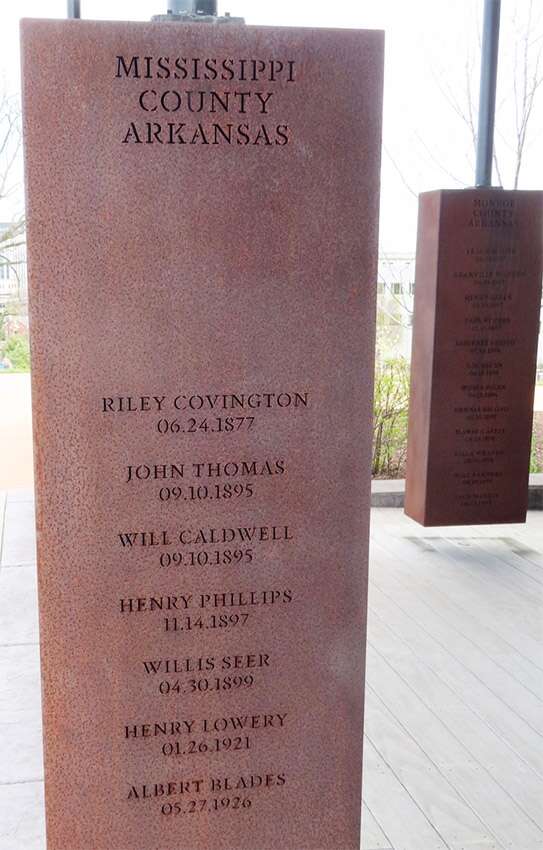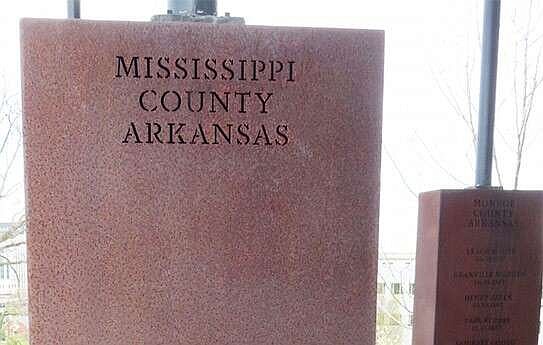In the summer of 1877, a number of newspapers reported that a Black man named Riley Covington had been lynched for murder in Osceola. This information has been included on various inventories of lynchings, and his reported murder is even memorialized at the National Memorial for Peace and Justice in Montgomery, Ala. However, Covington was not actually lynched but instead was tried, convicted of murder and incarcerated.
The June 26, 1877, edition of Illinois's Cairo Bulletin gives the most detailed information on Covington's alleged crimes and arrest. Covington first came under suspicion when, in November 1876, he befriended a Black cotton picker identified only as Shackleford near Osceola. The two disappeared, and several weeks later, Covington returned with Shackleford's watch, hat and coat. When asked where Shackleford was, he said that he had gone to New Orleans.
Local citizens were suspicious, but there was no investigation. In December 1876, Covington met a Black fur dealer named Thomas Wilkinson. He traveled with him on his rounds, and they collected a large quantity of furs. On the way, Covington allegedly traded Shackleford's watch to a Mr. Baggott for a gun. Shortly after this purchase, shots were heard nearby. Covington appeared back in Mississippi County with a load of furs and, when asked about Wilkinson's whereabouts, said he had left him drunk in Osceola. Covington then disappeared. Several weeks later, authorities found Wilkinson's body; he had been shot twice, beaten and robbed of about $300, in addition to the furs. The grand jury heard the case, and all the facts pointed to Covington.
Covington resurfaced in Cairo, Ill., where he had several jobs. By late June 1877, he had taken over a barbershop belonging to Ed Braxton, where he had been working for some time. According to a June 23 advertisement in the Cairo Bulletin, "Riley is one of the few first-class tonsor[i]al artists in Cairo and his patrons all testify to the excellence of his work, and his gentlemanly treatment, of all who have dealings with him."
His success was to be short-lived. In June, the police chief in Cairo received a description of Covington and notified Osceola authorities. On June 23 or 24, a marshal arrived from Arkansas to arrest him, and took him back to Osceola on June 27 for trial in the Wilkinson case. According to the June 30 edition of the Osceola Times, if found guilty, Covington "should be made to shave the furze off a new rope by friction around his neck."
On June 30, 1877, the Cairo Bulletin reported that when Covington arrived in Osceola, he was taken from authorities by a mob of whites and Blacks. He was then reportedly taken to the woods, where mules were tied to his neck and feet and were used to literally pull him apart.
According to a resident of Osceola, there "was not the shadow of a doubt in regard to the unfortunate negroes [sic] guilt." Within several days, the Bulletin received a letter from J.O. Blackwood, Covington's lawyer, declaring that rumors of the lynching were false and that "Covington is alive and in good health. I saw him about two hours ago and he is in fine spirits."
 Memorial to those lynched in Mississippi County at the National Memorial for Peace and Justice in Montgomery, Alabama; 2022 (Courtesy of Nancy Snell Griffith)
Memorial to those lynched in Mississippi County at the National Memorial for Peace and Justice in Montgomery, Alabama; 2022 (Courtesy of Nancy Snell Griffith)
The Osceola Times responded to the Bulletin's June 30 report on the lynching. Calling the report "a grave injustice done our people," the writer maintained that the only mob that threatened Covington after his arrest was composed of Blacks in Cairo, who were foiled by the police. There was no mob in Osceola, and Covington was not in "any way mistreated, nor will he ever be while he is a prisoner among us ... our citizens, Blacks as well as whites, are as law-abiding and as much opposed to mob-violence, if not more so, as are those of Cairo, or any place in Illinois."
Although the affair seemed to be settled, a gruesome report of the supposed lynching appeared in the Kenosha (Wis.) Telegraph on July 12. Describing "a horrible lynching affair," the Kenosha paper reported that a mob had taken Covington from the sheriff, and "tying ropes around his neck and feet, hitched mules to them. The animals were then goaded to madness and driven in opposite directions, tearing the unfortunate man from limb to limb. His piteous cries for a more merciful death are said to have been heartrending."
Riley Covington was in fact tried and convicted of murdering Wilkinson. On the 1880 census, Covington, aged 27, was listed as incarcerated in the Arkansas State Penitentiary in Pulaski County. -- Nancy Snell Griffith
This story is adapted by Guy Lancaster from the online Encyclopedia of Arkansas, a project of the Central Arkansas Library System. Visit the site at encyclopediaofarkansas.net.
